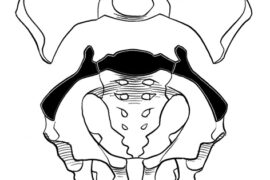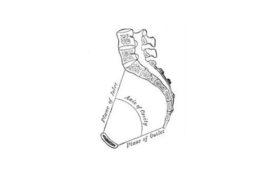High rates of Lower Back and Pelvic Girdle pain in Nigeria
19 March 2017 Research‘The incidence of LBPs and pelvic girdle pains was high and found to be 34.3% and 57.6%, respectively. Analgesics were used especially among those with severe pains. There was an incidental finding of...
Lees meerExcessive contraction of the TrA is present during ASLR in long-lasting posterior pelvic girdle pain
20 February 2017 Research‘Significant excessive contraction of the TrA is present during ASLR in patients with long-lasting pregnancy-related posterior PGP. The present findings do not support the idea that contraction of the TrA is decreased in long-lasting pregnancy-related...
Lees meerWeb-based discussion forums are potential resources that health professionals may find useful
25 March 2016 Research‘The popularity of Web-based discussion forums among pregnant women suggests that this group needs additional sources of information and support to complement traditional consultations with the health professionals. The professionals need to recognize...
Lees meerPLBP/PGP needs to be addressed early in pregnancy to reduce both individual suffering and risk of chronicity
25 March 2016 Research‘Most women did not report any sick leave or sought any healthcare due to PLBP/PGP the past 6 months at Q3. However, women with ‘continuous’ PLBP/PGP 14 months postpartum did report a higher prevalence and...
Lees meerAssessment of pain in the lumbopelvic area early in pregnancy and postpartum necessary to identify women with risk of long term pain
25 March 2016 Research‘This unique long-term follow up of PGP highlights the importance of assessment of pain in the lumbopelvic area early in pregnancy and postpartum in order to identify women with risk of long term...
Lees meerGood quality trials are needed to ascertain the most effective elements of postnatal exercise programs suited for LPP treatment
25 March 2015 Research‘Our review indicates that only few randomised controlled trials have evaluated the effectiveness of exercise on LPP among postnatal women. There is also a great amount of variability across existing trials in the...
Lees meerDrawing-in exercise leads to a small widening of the Intra Rectus Diastasis
25 March 2015 Research‘Overall, there was a contrasting effect of the 2 exercises, with the abdominal crunch exercise consistently producing a significant narrowing of the IRD. In contrast, the drawing-in exercise generally led to a small widening of the IRD.’ abstract Mota...
Lees meerSelf-reported PGP, pain locations and clinical tests at GW30 do not lead to unfavourable clinical course postpartum
25 March 2014 Research‘PGP prevalence remained unchanged from 12 weeks to one year postpartum (31-30%). Physical functioning (PF) and bodily pain(BP) scores improved markedly from Gravity Week 30 to 12 weeks postpartum, and marginally thereafter. The most...
Lees meerpain location combined with responses to P4 and ASLR tests are relevant when evaluating affliction in pregnant women with possible PGP
25 March 2010 Research‘The objective of this cross-sectional study was to explore the associations between pain locations, responses to the posterior pelvic pain provocation (P4) test, responses to the active straight leg raise (ASLR) test and...
Lees meer








